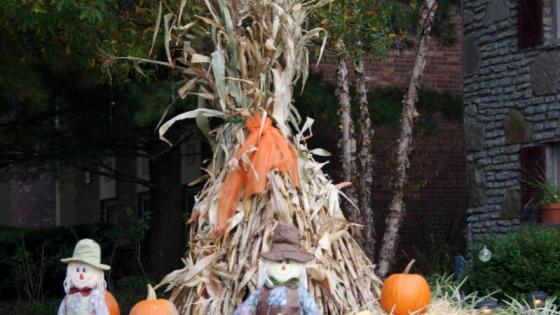
Corn Shocks
Corn Shocks
Corn shocks standing in corn fields were once a common sight during harvest. This method of drying corn (Zea mays) was replaced once mechanical harvesters appeared on the scene. Today corn shocks are more commonly seen in fall displays that may also include pumpkins, gourds, and straw bales.
Key Requirements
| Land | Low |
| Labor | Medium to High |
| Capital | Low |
Take the HortBizQuiz to see how much Land, Labor, and Capital you have for your operation.
Markets
- Direct to Consumer
- Farmer's Market
- On-Farm Stands
- Garden Centers
- Local Grocery
Pests & Disease
Major insect pests include flea beetle, cutworm, corn borer, and corn earworm. Potential disease problems include damping-off, gray leaf spot, stalk rots, and viruses.
Costs and returns are presented as estimates. They will vary based on your farm and markets.
Costs and returns are presented as estimates. They will vary based on your farm and markets.
Challenges
- Considerable hand labor is to be involved in shock production.
- Ornamental corn will freely cross-pollinate with other types of corn making isolation necessary if field or sweet corn crops are also grown by.
- Producers need to have a place to market their ornamental products before beginning production.
Opportunities
- Markets for ornamental crops, such as shocks, continue to stay strong, espeically in areas with larger populations.
- Fall decorations rank just behind Christmas decorations in dollars spent, with the average American household spending $45 annually on fall decorations.